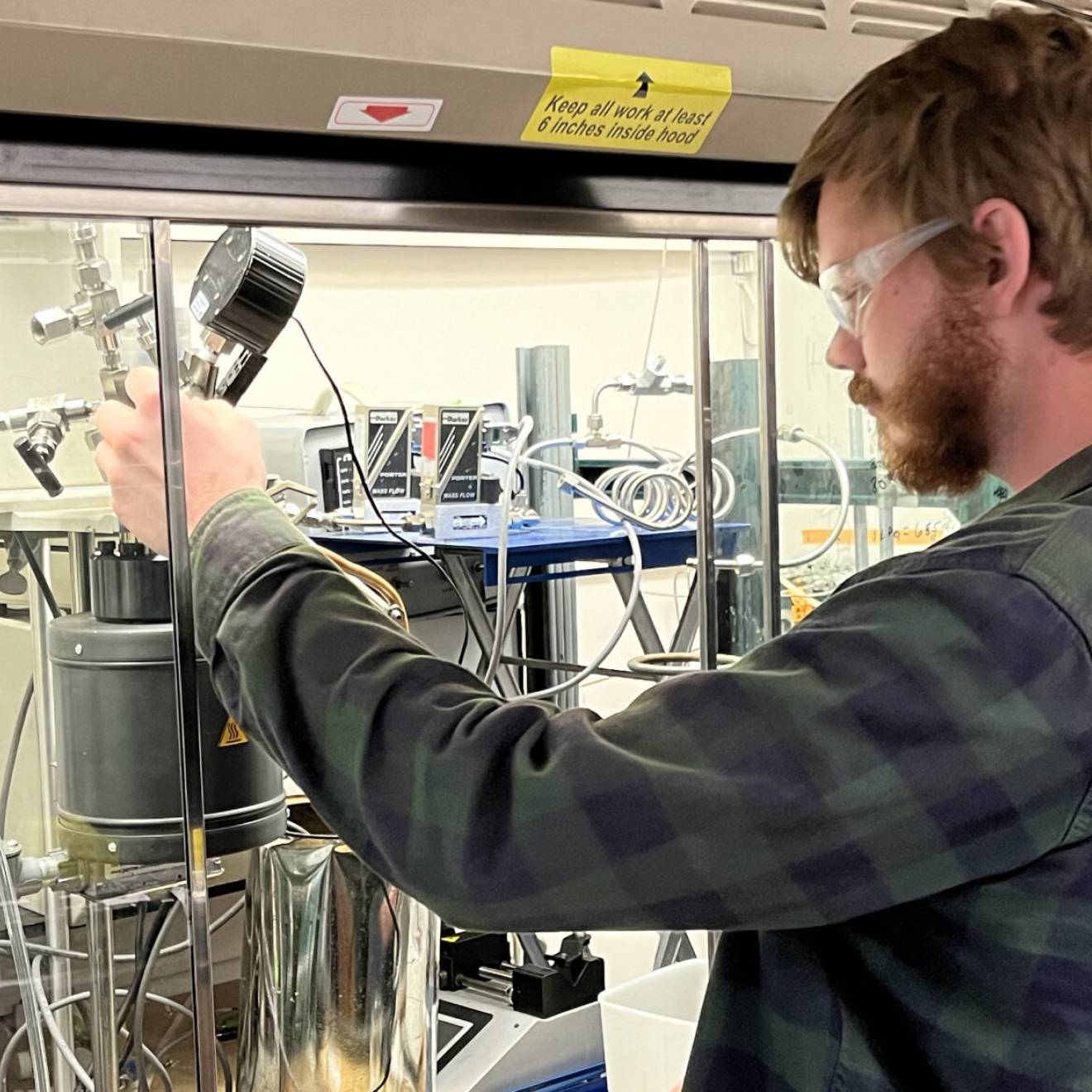Iqbal Pittalwala, UC Riverside
Ants, which are eusocial insects, have long intrigued scientists as a model for cooperation inside a colony where they nurse the young, gather food and defend against intruders. Most recently, ants have been shown to cooperate when transporting big chunks of food, they have been studied for how they manage to keep clean, and they have been examined also for why most of them in a colony are lazy.
Add to this list now how ants identify different members of their colony from other colonies.

Credit: Juergen Leibig
Scientists at the University of California, Riverside, have found that ants communicate using a number of hydrocarbon chemicals present on their cuticles (their outer shells). Reporting today (Aug. 13) in the journal Cell Reports, the researchers note that ants, which have evolved some of the largest families of olfactory receptor genes in insects, use their powerful sense of smell to sense the chemicals present on the cuticle of individuals to precisely identify the different members of their society.
“Until now, very little was understood about how ants use olfactory detection of pheromones to recognize individuals belonging to different castes or different colonies in their societies,” said Anandasankar Ray, a neuroscientist and an associate professor ofentomology, who led the research team. “To address this problem, we decided to focus our attention on the worker ants’ antennal neurons and their responses to hydrocarbons on the cuticle. What we wanted to study was how ants detect sophisticated pheromones which organize their behaviors efficiently into colonies, and help recognize individuals from different castes, the queen, and non-nestmate intruders.”
Ray explained that social insects like ants have remarkable ability to organize into large colonies with multiple castes participating for the colony to succeed, and like any large society, this coordination requires effective communication between individuals.
His lab applied a powerful electrophysiology method, to systematically test hydrocarbons present on the worker and queen cuticles that have previously been suspected to act as pheromone cues.
“To our surprise we found that these very low volatility compounds are not only detected sensitively by the ants’ specialized antennal sensors, but almost all of the hydrocarbon components are detected,” Ray said. “This broad-spectrum ability to detect hydrocarbons by the ant antenna is unusual and likely a special property of social insects. Using this high-definition ability to smell ‘ant body odor’ the ants can recognize the various castes in the colony as well as intruders.”
The researchers’ findings confirm the following unique aspects amongst social insects:
- Recognition of individuals at very close proximity in a large crowd in a colony is facilitated by use of low volatility cuticular hydrocarbons. A more volatile cue would be confusing to associate with an individual, and could overwhelm the olfactory system in the colony by constantly activating it.
- Ultimately each ant cuticle has a blend of several cuticular hydrocarbons. The precise composition of the blend could be a useful solution for coding information on several castes both inside a colony and intruders from outside a colony. In a way, each of these individual hydrocarbons act together in a “chemical barcode” which other individuals in a colony use for recognition of an ant’s caste or nest.
- These two tasks are feasible not only because ants have a sophisticated olfactory receptor system with the largest odorant receptor gene family (more than 400 genes) known in insects, but also because they have remarkable abilities to learn and behaviorally discriminate closely related hydrocarbons.
“The evidence suggests that this large number of receptors is probably needed to smell out the complex bouquet of hydrocarbons each individual emits,” Ray said. “We are closing in to finding the functional roles of these receptors, and, in particular, finding the olfactory receptors that detect pheromones from the queen who regulates much of the order in the colony.”
Ray explained that the prevailing model, proposed in 2005, suggested that worker ants could preferentially smell only non-nestmate cuticular hydrocarbons, and not smell the hydrocarbons from nestmates.
“This model started to seem unlikely after we found how broadly the worker antennal neurons can respond to hydrocarbons,” he said. “When we tested this with our sensitive electrophysiology assay we found that ants can indeed detect both nestmate and non-nestmate cuticular extracts, as we had predicted.”
Ray, who is the director of the Center for Disease Vector Research at UC Riverside, was joined in the study by Kavita R. Sharma (first author) at UCR; Brittany L. Enzmann, Dani Moore and Jürgen Liebig at Arizona State University, Tempe; Yvonne Schmidt and Berhard Breit at Albert-Ludwigs-Universität Freiburg, Germany; Graeme R. Jones and Jane Parker at Keele University, the United Kingdom; Shelly L. Berger at the University of Pennsylvania; Danny Reinberg at the New York University School of Medicine; and Laurence J. Zwiebel at Vanderbilt University, Tenn.
The research was funded by the Howard Hughes Medical Institute (HHMI) as a HMMI Collaborative Innovation Award to Reinberg and five co-PIs including Ray.

